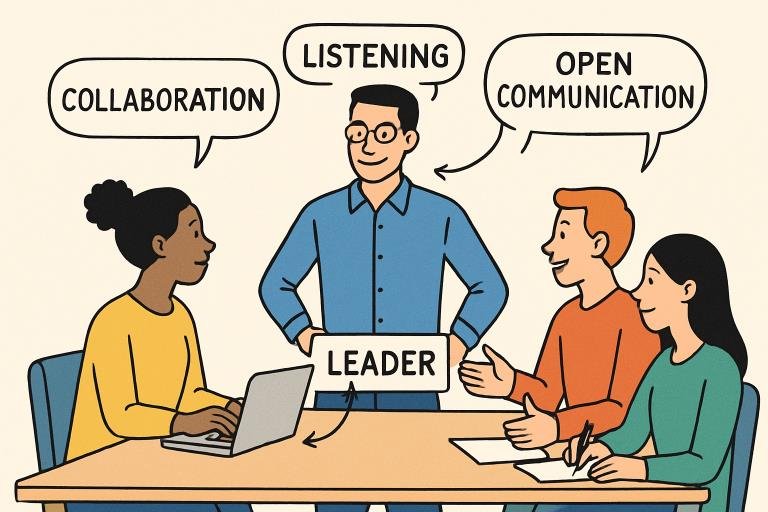Key Takeaways
- Emotional intelligence is crucial for building cohesive and motivated teams.
- Leadership styles have a direct impact on project efficiency and team dynamics.
- Strategic timing of praise and criticism can enhance team performance.
- Shared leadership fosters a sense of ownership and accountability among team members.
In today’s rapidly evolving work environment, the role of leadership is more vital than ever. Modern leaders are expected to guide teams through uncertainty, inspire innovation, and adapt quickly to changing circumstances. The most effective leaders empower their teams, cultivate resilience, and create thriving cultures that drive consistent results. One increasingly popular strategy is leveraging executive leadership and coaching as a dynamic tool to enhance both individual and organizational performance. Leaders are no longer just managers, as they are architects of culture, engagement, and growth.
Implementing effective leadership strategies has a significant impact on both the short-term and long-term success of an organization. Contemporary leaders support their teams by promoting psychological safety, aligning team goals with a greater mission, and enabling proactive problem-solving. Today’s workforce expects guidance and authenticity over command and control. Companies that prioritize modern leadership consistently outperform those that don’t, both in employee satisfaction and organizational performance. Staying ahead means leaders must continually reinvent their approach to keep their teams motivated, cohesive, and accountable.
One hallmark of successful leadership is adaptability, the ability to read situations, accommodate diverse personalities, and pivot strategies as conditions change. By embracing collaboration and nurturing open lines of communication, modern leaders boost both productivity and morale. These qualities are increasingly critical, especially in hybrid or remote work settings, where direct oversight is less feasible but trust and autonomy are paramount.
Building these leadership capabilities does not happen by accident. It requires ongoing development, reflection, and learning from both internal experience and external resources.
Emotional Intelligence: The Cornerstone of Effective Leadership
Emotional intelligence (EI) is a crucial factor that distinguishes outstanding leaders from average ones. Leaders with high EI have a nuanced understanding of their own emotions and can interpret and respond to the feelings of others with empathy. This translates into a workplace where team members feel valued, heard, and understood. Emotional intelligence also underpins conflict resolution and inspires greater loyalty, leading to improved alliance and reduced turnover. Recent research reinforces that EI builds cohesive, empowered teams and significantly boosts leadership impact across a variety of industries.
Leadership Styles and Project Efficiency
The style a leader employs can make or break a project’s success. Effective leaders excel by clearly communicating goals, offering constructive feedback, and encouraging initiative from team members. Transformational leadership, in particular, has been shown to increase employee engagement and project alignment, resulting in more outcomes achieved on time and within scope. A culture of open dialogue and mutual respect leads to better decision-making and faster resolution of roadblocks. Research consistently links flexible, inclusive leadership styles to higher levels of stakeholder satisfaction and goal attainment.
Strategic Timing of Praise and Criticism
When it comes to providing feedback within a professional or team setting, timing is critically important and can significantly influence the success of the team and the project at hand. Leaders and managers who strategically and thoughtfully deliver praise and positive reinforcement right at the outset of a project or task help to set an optimistic and constructive tone, thereby building confidence and morale among team members and colleagues. As the work progresses, offering timely and well-considered constructive criticism and feedback plays an essential motivational role, encouraging employees and team members to reflect on their performance, make necessary adjustments, and ultimately elevate their overall performance and productivity. The judicious and skillful use of positive reinforcement, along with mid-course correction strategies, effectively capitalizes on the imprinting effect of early encouragement, while also helping to renew focus and energy during critical and sometimes challenging phases of a project or initiative. This delicate and carefully maintained balance ensures sustained ongoing progress, promotes a healthy and adaptive work environment, and nurtures a culture of continuous improvement, learning, and growth within the organization or team.
Shared Leadership: Empowering Team Members
Shared leadership is fundamentally transforming the way modern organizations operate by distributing leadership roles and responsibilities across various teams and individuals within the organization. Instead of relying solely on traditional hierarchical structures where authority is concentrated at the top, shared leadership empowers members at all levels to take ownership of their tasks, share insights freely, and influence key outcomes regardless of their formal titles or positions. This innovative model capitalizes on the diverse perspectives, experiences, and talents that exist within a group, leading to more agile, adaptable, and innovative teams. Research and practical applications have shown that shared leadership fosters greater employee engagement, enhances accountability, and builds resilience among team members. As a result, teams become better equipped to handle complex, unpredictable challenges and to seize new opportunities in a rapidly changing business environment. Overall, shared leadership promotes a collaborative culture, drives continuous improvement, and positions organizations to thrive in the modern world.
Building a High-Performance Team
- Connecting Work to Purpose:Leaders motivate teams by linking daily tasks to a broader sense of mission, giving everyone a stake in overarching company outcomes.
- Fostering Psychological Safety:Cultivating an environment where team members can express ideas, take risks, and admit mistakes without fear of retribution encourages creativity and open communication.
- Promoting Collaboration:Encouraging shared problem-solving and regular knowledge-sharing sessions ensures that individuals feel valued and actively invested in the team’s successes.
Transitioning from Command to Collaboration
The most dynamic and effective leaders in the contemporary workplace are gradually shifting away from traditional authoritarian, top-down management styles to more collaborative and inclusive approaches. They aim to facilitate shared goals and mutual support among team members by fostering an environment of openness and trust. By prioritizing open forums, regular check-ins, transparent communication, and active listening, these leaders ensure that each team member feels valued, engaged, and aligned with the collective objectives. This transition not only enhances individual accountability, responsibility, and motivation but also enables teams to respond swiftly, adapt to changing circumstances, and effectively address new challenges in a competitive landscape.
Embracing Networked Leadership
Networked leadership takes this ongoing evolution a step further by distributing authority and decision-making power across various cross-functional teams within an organization. This agile and flexible approach promotes collaborative problem-solving by harnessing the power of collective intelligence, rather than relying solely on a single decision-maker or a top-down hierarchy. By empowering multiple teams to work together, networked leadership enables organizations to be more responsive to changing market conditions, more adaptable to unforeseen challenges, and more innovative in developing new products, services, and strategies, thus providing a crucial and competitive advantage in today’s rapidly changing, highly competitive, and fast-paced marketplace.
Conclusion
Modern leaders, those who prioritize emotional intelligence, implement inclusive leadership styles, and embrace both shared and networked leadership, are fundamentally redefining what it truly means to lead teams to success in today’s dynamic and ever-changing organizational landscape. By fostering a culture of collaboration, supporting psychological safety, and leveraging strategic feedback, today’s leaders are not only building high-performing teams but also cultivating an environment of continuous growth and adaptability. These qualities enable organizations to meet current and future challenges with agility, resilience, and a forward-thinking mindset, ensuring sustained success and innovation.



